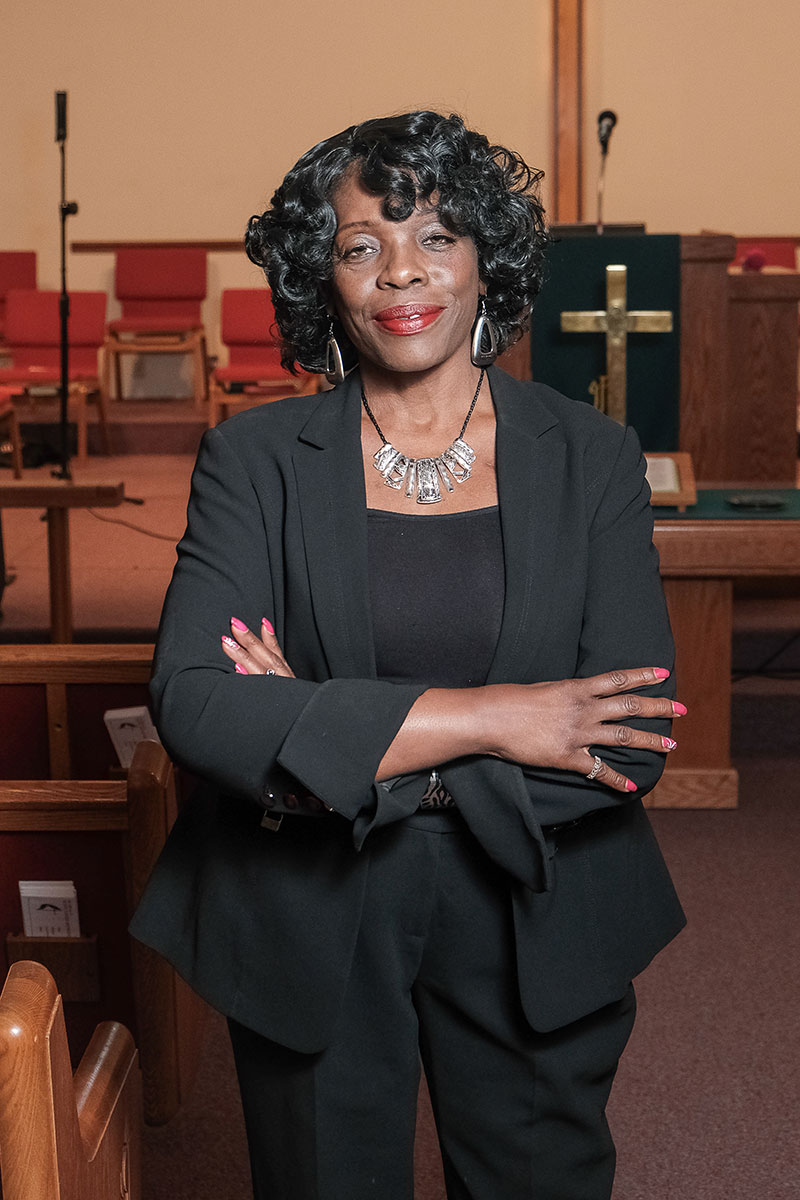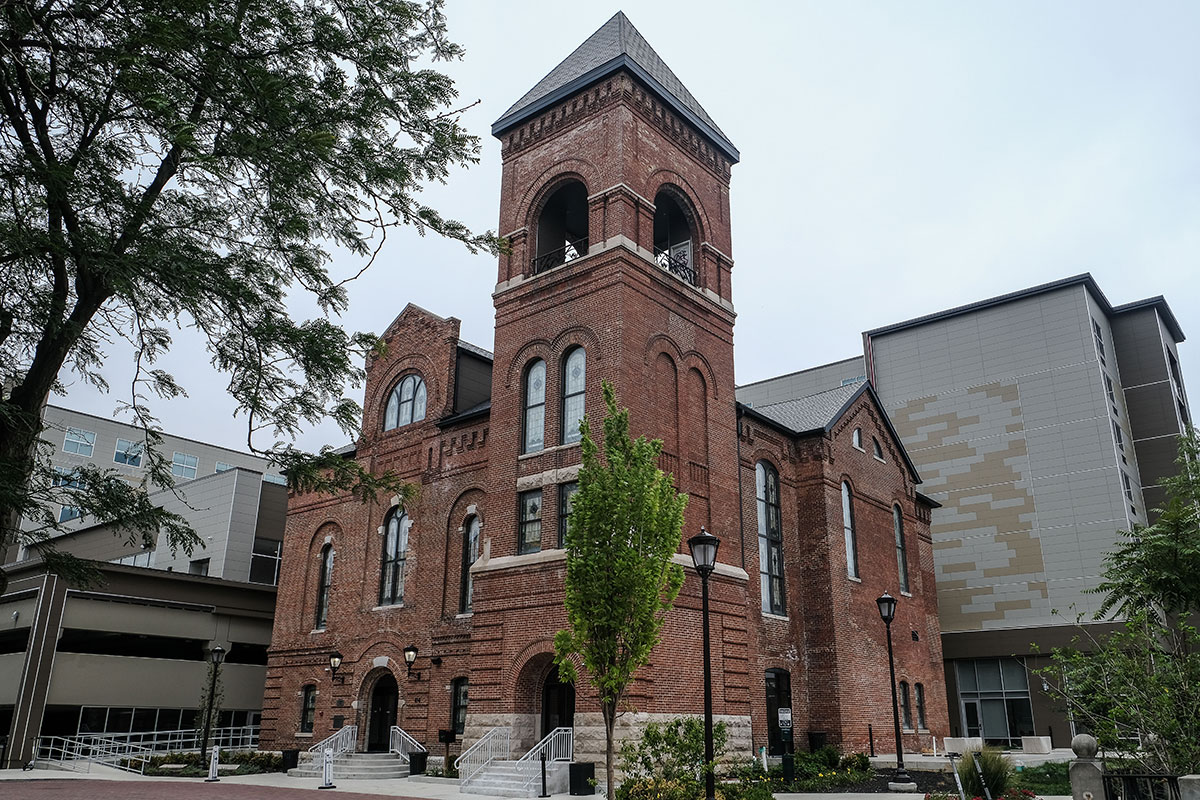Subscriber Benefit
As a subscriber you can listen to articles at work, in the car, or while you work out. Subscribe NowThanks to a recent $5 million Lilly Endowment Inc. grant and other financial support, Indiana Landmarks is expanding its boundaries beyond just preserving buildings.

The not-for-profit is launching an effort, the Black Heritage Preservation Program, that will work to identify, protect and celebrate historically significant places that might—or might not—include surviving historical structures.
It’s a new angle on preservation for the Indianapolis-based organization, which was founded in 1960. It has built its name on its efforts to save endangered structures around the state—places ranging from the West Baden Springs Hotel in southern Indiana to the Circus Hall of Fame in Peru.
Indiana Landmarks established an African American Landmarks committee in the 1990s, and it has worked to save multiple significant Black history sites since then. But now, the organization will for the first time have a full-time paid staff member focused specifically on Black heritage preservation. Eunice Trotter, an Indianapolis historian, writer and community organizer, starts work at Indiana Landmarks Sept. 1 as the program’s director.
“My first priority is to build relations and to educate the community about Black heritage preservation,” Trotter said. “When I ask someone, ‘What is Black heritage?’ I’ve received all kinds of answers. And then the next question is, ‘How do you preserve Black heritage? How do you preserve history and heritage when there’s no physical space in existence?’”
Trotter, 69, has had a lifetime interest in Black history and heritage. As a child, she grew up listening to stories from a cousin who loved genealogy. She went on to work in journalism at both The Indianapolis Star and the Indianapolis Recorder. She owned the Recorder from 1987 to 1991 and was inducted into the Indiana Journalism Hall of Fame in 2017. She’s also worked in public relations and served on numerous community boards.
Trotter’s award-winning 2021 book, “Black in Indiana,” focused on her great-great-great-grandmother Mary Bateman Clark, who won her freedom from indentured servitude in a precedent-setting 1821 legal case heard by the Indiana Supreme Court.
But despite her wealth of knowledge, Trotter expects that, in her new job, she’ll have a lot of discoveries to make. “I’m going to probably get inundated with stories and with histories that we may not know very much about at all.”
Indiana Landmarks President Marsh Davis is optimistic as well. “My hope is that we will discover more places, and more importantly, learn more about those places that we now have very limited knowledge of.”
Indiana Landmarks established a Black landmarks program in the early 1990s, but the new Black heritage program “really amplifies that work and brings new focus,” Davis said.
Preservationists have begun in recent decades to embrace the broader view of the preservation field, which traditionally had focused on historically significant structures, Davis said.
“There may be no building or no thing at that site, but the place is still important,” he said. “It’s not always about a building.”
Black structures have been especially vulnerable to destruction to make way for roads, he said, in the name of urban renewal or for other reasons—but the history associated with a place remains, even if some of the buildings do not.
He cited the example of Indiana Avenue, where—with the exception of the Madame Walker Legacy Center—evidence of a once-thriving Black cultural hub has mostly disappeared. “Nearly all the fabric has been erased—and what we don’t want to do is erase the heritage of that place.”
As another part of that broadened understanding, Davis said, preservationists have come to appreciate not just the architecturally unique structures but the “vernacular” ones—the everyday, common structures preservationists might have previously overlooked. “Even these simple buildings, they carry a lot of meaning.”
This broader understanding is especially relevant to Black history and heritage preservation because sites related to Black history have “often been undervalued and under-resourced,” said Brent Leggs, a vice president at the Washington, D.C.-based National Trust for Historic Preservation. “So many African American places, for so many reasons, have been lost.”
Leggs is also executive director of the National Trust’s African American Cultural Heritage Action Fund, which in 2021 provided Indiana Landmarks with a $50,000 grant. That grant helped establish the paid position Trotter will be taking.
Leggs said Black heritage preservation programs are not a new concept. He cited as two examples North Carolina’s African American Heritage Commission, established by that state’s legislature in 2008 and the WeGOJA Foundation in South Carolina, whose predecessor organization, the South Carolina African American Heritage Foundation, was also founded in 2008.
The concept has gained traction over the past five years or so, he said. “It’s happening from Los Angeles to Indiana to local preservation organizations in Georgia.”
But it’s not as common for organizations to take the step Indiana Landmarks is taking.
“It’s fairly rare to have a paid staff position where the person is devoted full time to helping communities preserve African-American places,” Leggs said. “It’s an exciting opportunity.”

Lilly Endowment Communications Director Judith Cebula said the Indiana Landmarks grant was a good fit for the endowment’s “long history of supporting arts and culture programs based in Indianapolis, including Black arts and cultural programs and organizations.”
Davis said $4 million from the Lilly Endowment grant will be set aside in an endowment for both the Black Heritage program and for the full-time position Trotter is taking. “It won’t be something we have to raise funds for every three years. We can, with reasonable confidence, expect this to be a permanent program.”
The remaining $1 million is designated for grants to be dispersed over the next five years. Indiana Landmarks is still working out the particulars, Davis said, but those grants might fund things such as capital projects, a lecture series, and grants to help cover the costs that come with nominating a site for inclusion on the National Register of Historic Places.
Trotter also aspires to establish a scholarship program for Black students seeking careers in historic preservation.
She has high hopes that these efforts will generate interest that reaches far beyond the state’s borders.
“There’s going to be people looking to Indiana to see what we’re doing and how we’re doing it,” Trotter said. “Now, we’re not the first to start doing it, by any stretch of the imagination, in terms of focusing on Black heritage preservation. But we are one of the early communities that is focused on that—and funding that.”•
Please enable JavaScript to view this content.




This is important. Eunice Trotter will do an excellent job. There are so many untold stories, places and buildings in Indiana that have a strong African American Heritage. Thanks Lilly for funding this and thanks Ms. Trotter for launching into this important work.